Scientists have created the ultimate fake tan: a chemical that triggers the release of dark pigment in the skin without the need for sunbathing or a genetic predisposition for tanning.
The substance would induce a tan even in fair individuals with the kind of skin that would naturally turn lobster pink rather than bronze in the sun, the scientists predicted.
“It would not actually be a fake tan, it would be the real thing,” said Professor David Fisher, who led the work at Massachusetts General Hospital. “It would just be sunless.”
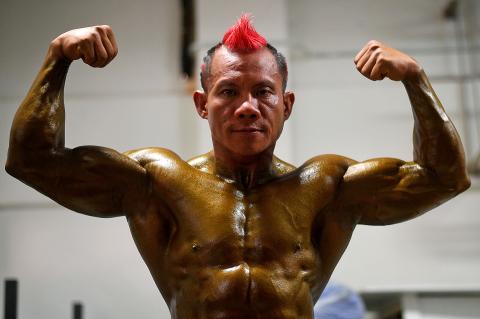
Photo: AFP / Manan VATSYAYANA
The product, which has so far only been tested on mice and skin samples in petri dishes, would no doubt be a welcome upgrade from the telltale orange hue of a spray tan. However, the scientists’ central motivation was coming up with more effective protection against skin cancer.
People with dark skin tones, and those who tan easily, have a far lower risk of melanoma, the most deadly form of skin cancer. The dark pigment, melanin, dissipates more than 99.9 percent of absorbed UV rays, limiting radiation damage to cells that can be the first step towards cancer.
Whether a person tans or burns in the sun is dictated by which variant they carry of a gene called MC1R. In people who tan, this gene sets off a cascade of reactions during sun exposure that results in skin cells producing melanin. Redheads could, in theory, produce the pigment in their cells — it’s just that the chain reaction is never set in motion.
The latest study, published in the journal Cell, found that a small molecule, called an SIK inhibitor, could be used to artificially switch the melanin production process on, at a point further down the chain from where the MC1R gene acts as a blockade.
The researchers applied the chemical to a skin sample kept in a petri dish, and found that it darkened, with the tan lasting for days after the initial application. When ginger mice were treated, they turned almost jet black in a day or two with a strong enough dose, and were strongly protected against sunburn and skin cancer.
The color faded away over a week or so as skin cells sloughed off the surface, just as a normal tan would do, and aside from changing color the mice did not suffer any obvious side-effects.
Fisher envisions artificial tanning being used in conjunction with normal sunscreen.
“Sunscreen is extremely important; there definitely is protection, but [its] efficacy in melanoma and basal cell carcinoma is surprisingly and frustratingly incomplete,” said Fisher. “If you have someone who can tan very easily, it seems to be protective above and beyond the SPF factor.”
He added that for those who tan easily, it was not always clear whether wearing sunscreen all the time, but remaining as pale as possible, was more protective than allowing your skin to tan and relying on natural protection.
“The dream strategy would be to combine both,” Fisher added.
Melanoma is the least common but most serious form of skin cancer, and is responsible for about 2,000 deaths a year in the UK.
David Adams, a geneticist at the Wellcome Trust Sanger Institute who has previously investigated the genetics of skin cancer, described the latest work as a significant advance. “If administered properly I imagine that the level of protection obtained by redheads would approximate the level of sun protection enjoyed by people with naturally tanned skin,” he said.
Wenyi Wei, an assistant professor at Harvard University and also a specialist in the genetics of skin cancer, said: “Increasing skin pigmentation as a natural barrier of UV exposure is a great idea.”
However, he added that a potential downside of the new treatment is that the enzyme that it blocks (SIK), is itself a tumor suppressor, meaning the benefits of tanning would need to be carefully balanced with the risks of depleting this protective substance.
“I would suggest to use the SIK inhibitor only during high UV index seasons, not all year round,” he said.
The team are now looking for a commercial partner to carry out further testing in human trials. “It’s obviously critical that safety and toxicity studies need to be done,” said Fisher. “This is not a toy, it’s not a cosmetic.”
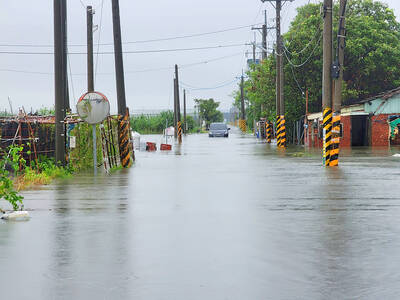
Water management is one of the most powerful forces shaping modern Taiwan’s landscapes and politics. Many of Taiwan’s township and county boundaries are defined by watersheds. The current course of the mighty Jhuoshuei River (濁水溪) was largely established by Japanese embankment building during the 1918-1923 period. Taoyuan is dotted with ponds constructed by settlers from China during the Qing period. Countless local civic actions have been driven by opposition to water projects. Last week something like 2,600mm of rain fell on southern Taiwan in seven days, peaking at over 2,800mm in Duona (多納) in Kaohsiung’s Maolin District (茂林), according to
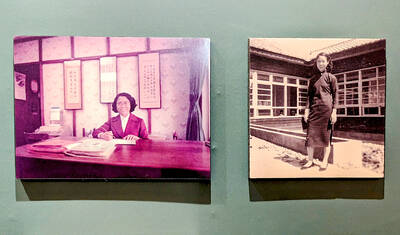
Aug. 11 to Aug. 17 Those who never heard of architect Hsiu Tse-lan (修澤蘭) must have seen her work — on the reverse of the NT$100 bill is the Yangmingshan Zhongshan Hall (陽明山中山樓). Then-president Chiang Kai-shek (蔣介石) reportedly hand-picked her for the job and gave her just 13 months to complete it in time for the centennial of Republic of China founder Sun Yat-sen’s birth on Nov. 12, 1966. Another landmark project is Garden City (花園新城) in New Taipei City’s Sindian District (新店) — Taiwan’s first mountainside planned community, which Hsiu initiated in 1968. She was involved in every stage, from selecting
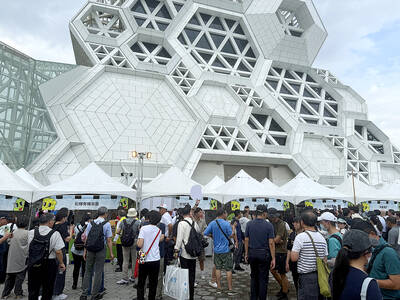
The latest edition of the Japan-Taiwan Fruit Festival took place in Kaohsiung on July 26 and 27. During the weekend, the dockside in front of the iconic Music Center was full of food stalls, and a stage welcomed performers. After the French-themed festival earlier in the summer, this is another example of Kaohsiung’s efforts to make the city more international. The event was originally initiated by the Japan-Taiwan Exchange Association in 2022. The goal was “to commemorate [the association’s] 50th anniversary and further strengthen the longstanding friendship between Japan and Taiwan,” says Kaohsiung Director-General of International Affairs Chang Yen-ching (張硯卿). “The first two editions
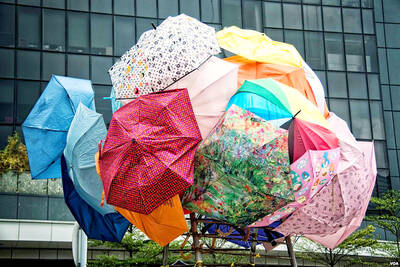
It was Christmas Eve 2024 and 19-year-old Chloe Cheung was lying in bed at home in Leeds when she found out the Chinese authorities had put a bounty on her head. As she scrolled through Instagram looking at festive songs, a stream of messages from old school friends started coming into her phone. Look at the news, they told her. Media outlets across east Asia were reporting that Cheung, who had just finished her A-levels, had been declared a threat to national security by officials in Hong Kong. There was an offer of HK$1m (NT$3.81 million) to anyone who could assist